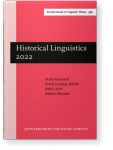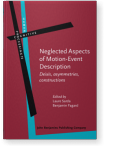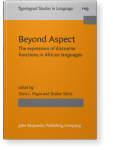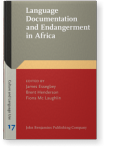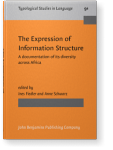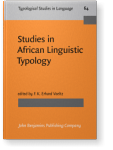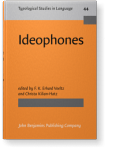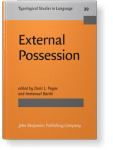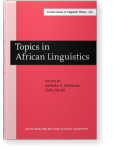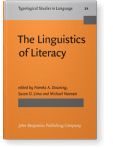2025 日本言語政策学会 / Japan Association for Language Policy. 言語政策 / Language
Policy 10. 2014 Historical Linguistics 2022: Selected papers from the 25th International Conference on Historical Linguistics, Oxford, 1–5 August 2022, Kennard, Holly, Emily Lindsay-Smith, Aditi Lahiri and Martin Maiden (eds.), pp. 62–78 | Chapter
Ronald P. Schaefer
List of John Benjamins publications for which Ronald P. Schaefer plays a role.
We assess the depictive and descriptive character of sound ideophones and their historical evolution in Emai of West Africa. Their initial depictive nature remains evident in phonological similarity to extant verbs with related meanings and retention of a perfective aspect mark. In their… read more
2022 Chapter 11. Constraints constrained: Equipollent verb constructions in Emai Neglected Aspects of Motion-Event Description: Deixis, asymmetries, constructions, Sarda, Laure and Benjamin Fagard (eds.), pp. 235–256 | Chapter
We investigate the framing typology for motion events initiated by Talmy (1985, 2000) relative to predications in Emai from West Benue Congo. We concentrate on Path, which appears either in a satellite or a verb. Two main framing patterns emerge. With a Cause co-event verb, Path lexicalizes in a… read more
2015 Aspectual and storyline tension in Emai’s (Edoid) narrative template Beyond Aspect: The expression of discourse functions in African languages, Payne, Doris L. and Shahar Shirtz (eds.), pp. 287–314 | Article
We examine aspect usage in an aetiological narrative of southern Nigeria’s Emai people. This follows a brief overview of Emai tonal and segmental aspectual categories. A privileged role emerges for the Past Perfect, as it codes the majority of main event line clauses. Nonetheless, a striking… read more
2015 Archaeological inspiration and historical inference: Directions for Edoid linguistic studies Language Documentation and Endangerment in Africa, Essegbey, James, Brent Henderson and Fiona Mc Laughlin (eds.), pp. 253–276 | Article
This paper highlights potential historical inferences one can draw about economic
lifestyle from lexical patterns of the Edoid speaking Emai people. The
selected inferences derive from the complementary use of morphology in the
coding of basic categories of Emai foodstuffs. While plant and animal… read more
2010 Topic and focus construction asymmetry The Expression of Information Structure: A documentation of its diversity across Africa, Fiedler, Ines and Anne Schwarz (eds.), pp. 261–286 | Article
This paper compares and contrasts key constituents of topic and focus constructions in the Benue-Congo language Emai. It examines the grammatical character of topic and focus positions, their associated main clauses and the resumptive function relating them. Relative to these three constituents,… read more
2006 Toward a typological perspective for Emai’s BE constructions. Studies in African Linguistic Typology, Voeltz, F.K. Erhard (ed.), pp. 377–396 | Article
2001 Ideophonic adverbs and manner gaps in Emai Ideophones, Voeltz, F.K. Erhard and Christa Kilian-Hatz (eds.), pp. 339–354 | Article
1999 On the Properties of Emai Possessors External Possession, Payne, Doris L. and Immanuel Barshi (eds.), pp. 449–472 | Article
1995 On the discourse function of possessor movement in Emai prose narratives Word Order in Discourse, Downing, Pamela A. and Michael Noonan (eds.), pp. 487–515 | Article
1993 On the typological character of property concepts in Emai Topics in African Linguistics: Papers from the XXI Annual Conference on African Linguistics, University of Georgia, April 1990, Mufwene, Salikoko S. and Lioba Moshi (eds.), pp. 159–178 | Article
1992 Interpreting Emai orthograpgic strategies The Linguistics of Literacy, Downing, Pamela A., Susan D. Lima and Michael Noonan (eds.), pp. 153–168 | Article
